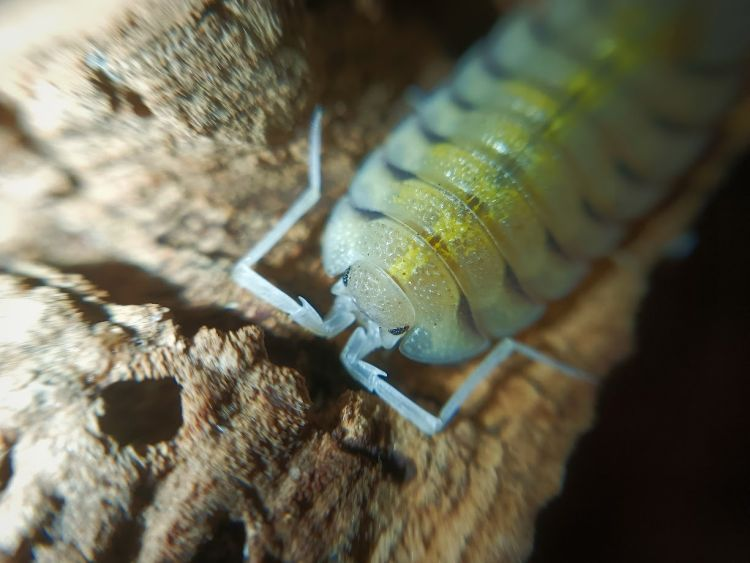
What could be interesting about woodlice? They are commonly disliked, and their appearance in the house can hardly please anyone. But someone devotes years to studying these creatures. Why they are interesting for scientists and how to join the club of woodlice fans was described by Fyodor Demin, a student of the biology department of Moscow State University. The conversation took place at the Utrish Marine Station of the IEE RAS.
- Fyodor, tell us what led you to study woodlice?
- Now I study woodlice at the Aleksei Nikolaevich Severtsov Institute of Ecology and Evolution, but in general the area of my interests is wider - these are many other invertebrates, primarily insects. I completed my bachelor's degree at the Timiryazev Academy, choosing woodlice as my area of interest, and entered the master's program of the biology department of Moscow State University to continue studying this area. However, I did not come to this choice right away. The first time I had to face a crossroads was right before entering a university: music or biology? At first I thought about entering the conservatory. But biology won out. I decided that music would be my hobby. The second "crossroads" arose about two years ago - praying mantises or woodlice? Woodlice won.
- Why?
- Most likely, due to their greater morphological diversity compared to praying mantises and their lesser study in our country. Both in the USSR and now in Russia, the number of scientists who study them at a high level can be counted on your fingers.

— Are woodlice insects?
— They are not insects, as many people think, but small crustaceans that can live on land and do not need a lot of water. The general order of isopod crustaceans includes not only terrestrial, but also aquatic and parasitic species.

— Why does their name in Russian refer to the word “wet” if they don't really need water?
— They need water in any case, like any living organism. In the process of evolution, representatives of the Isopoda order, also known as isopods, initially lived in water, and only then gradually came to land. Their name is due to the fact that woodlice prefer damp places. Probably, most often people found synanthropic species (that live in human dwellings) in damp rooms, which is why we have this name for them.
— How ancient are these creatures?
— The earliest finds of woodlice were attributed to the Cretaceous period, which is about 100 million years ago.
— What interesting things have you managed to learn about woodlice?
— I mainly study their nutrition, this issue was devoted to my diploma work, which I did partly in the entomology department of the Moscow Zoo, and partly in the IEE RAS under the supervision of the head of the laboratory for the study of ecological functions of soils Konstantin Gongalsky. I studied the food preferences of three species of woodlice – Porcellio laevis, Porcellio scaber and Porcellionides pruinosus. I also studied their ability to decompose the leaves of agricultural cereal plants. During the work it turned out that woodlice actively eat corn leaves, but are indifferent to rice and wheat. Perhaps this is due to the low silicon content in corn leaves.
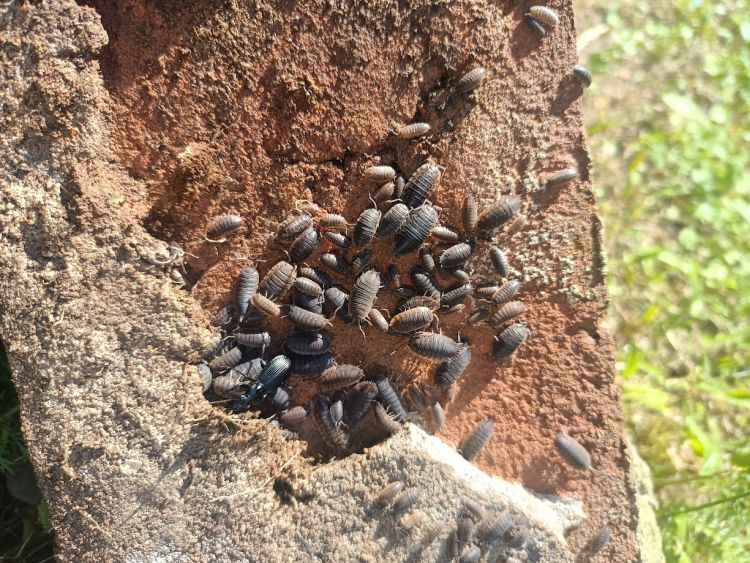
— They’re averse to silicon?
— In general, if you look at different soil saprophages — animals that process dead organic matter — most of them have similar nutritional and other ecological features. High silicon content in plants makes it difficult for microorganisms to decompose leaves and straw, and it is more difficult for woodlice to feed on them, since the leaves remain hard. This is my hypothesis. Chemical analysis of corn leaves showed that corn had the lowest concentration of silicon.
— Does this mean that silicon is not a substance that woodlice vitally need?
— Certainly not the case with other substances (for example, nitrogen, carbon, copper and calcium, which are among the most important substances). And a separate experiment should be conducted on the effect of silicon on their survival. I offered woodlice eight types of plants to study their food preferences. This type of experiment is called a "cafeteria".
— What is the purpose of your current expedition to the Utrish biological station?
— My goal is to collect samples of woodlice of three ecological groups: coastal species, near-water woodlice that live along freshwater streams, and land woodlice that do not require any water body nearby. In the future, the samples will be sent to Krasnoyarsk, to the Institute of Biophysics of the Siberian Branch of the Russian Academy of Sciences, to colleagues who study the transfer of fatty acids in food chains, for analysis of fatty acids and carbon with nitrogen in the body of woodlice. In addition, I found several species in the reserve that can probably be called rare - these are Buddelundiella cataractae, Caucasocyphoniscus taitii, Trachelipus utrishensis, Tylos europaeus and Halophiloscia couchii.
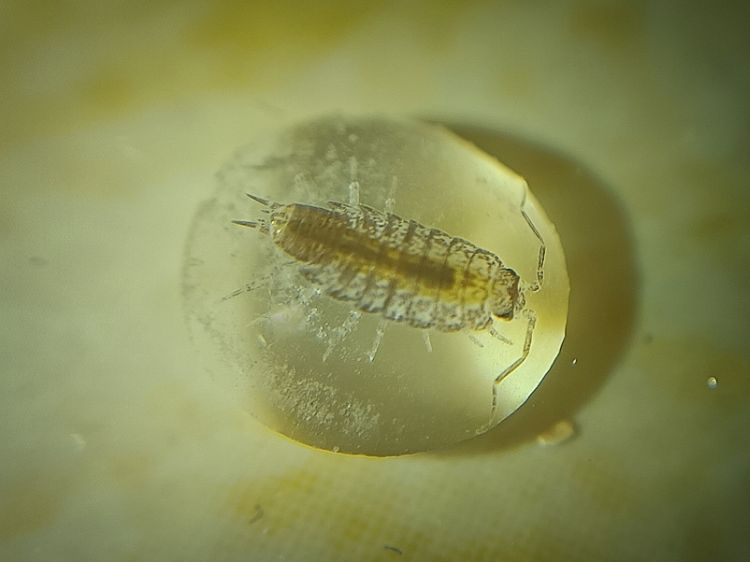
To find the species of interest, you have to cover quite large distances. For example, small woodlice live on the Pearl Waterfall, hiding in cracks. And near the streams that go into the very depths of the reserve, you can find many species that live in the soil or near the water. It is quite dry on Utrish, which is quite atypical for the habitation of most woodlice, since they prefer more humid places. And therefore due to the dry climate they have to look for bodies of water where it is cool and humid.
— What interested you most in woodlice?
— The diversity of life and morphological forms, behavioral features. Every year, more and more new species are described, and this suggests that their approximate number is not yet fully known. It is impossible to say exactly how many species there may be based on woodlice. And old species are regrouped through genetic analysis, which sometimes shows surprising results.
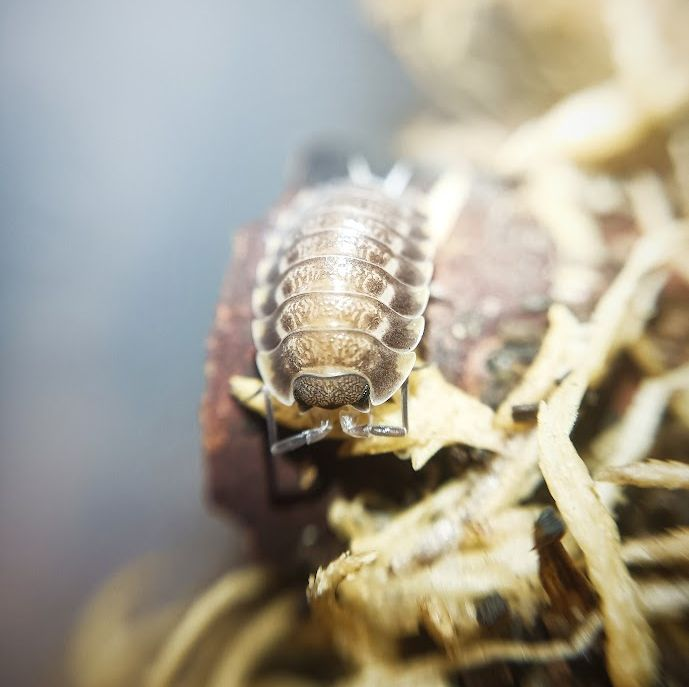
— For example?
— For example, some species of woodlice found in the same place and morphologically similar, using genetic analysis can turn out to be two different species. However, there are cases when, it would seem, two different species of woodlice by morphology turn out to be the same species by genetic analysis, although their external differences were initially very significant and they were described as two different species.
— How do they interact with each other?
— The behavior of woodlice is quite interesting. As a rule, they prefer to exist in groups. If you find one woodlice, there will be others nearby, they do not live alone. There are woodlice that are noted for sociality. These are, for example, woodlice of the genus Hemilepistus. Some woodlice are capable of migrating, like one of the Crimean species of the genus Cylisticus - they often have seasonal migrations, when a huge group of woodlice moves from one area to another. The coastal species Tylos granulatus grows up to five centimeters, lives near the sea and is capable of digging holes. Behavior features are quite diverse depending on the ecological group. Woodlice of the Armadillo officinalis species are capable of "squeaking" as a defense and curling up into a ball (this ability is called conglobation), some species are myrmecophiles and live in anthills. In general, this is a huge, amazing world.
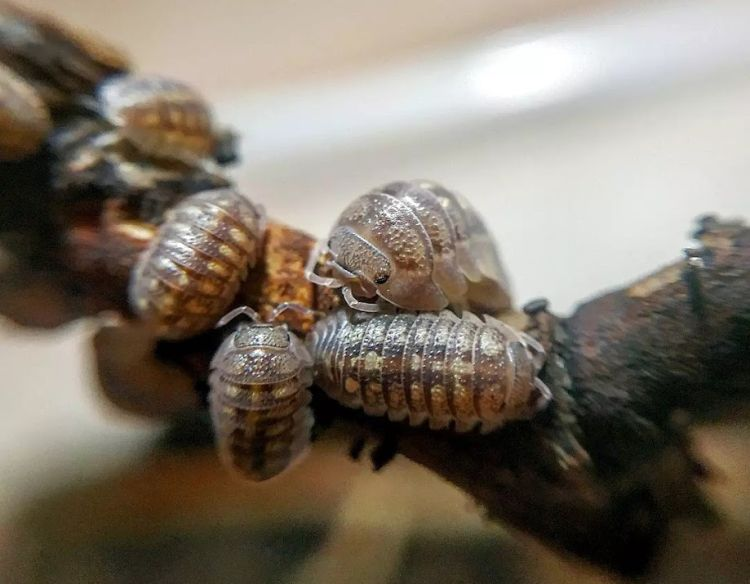
— You said that some species are social, but can woodlice be aggressive towards each other?
— I have never noticed one woodlice attacking another. But woodlice can fight for food. I used to keep a lot of woodlice at home, over 50 species, and I observed this behavior. When I threw them some kind of protein feed, for example, in the form of a piece of dry cat food or a dead cockroach, they would start fighting for it and try to drag it to their side.
— Where did you keep them?
— I had two shelves with dozens of plastic containers and mesh cages at home.
— How did your family feel about this?
— They gradually got used to it. At first, my parents said that there should be no creepy-crawlies at home, but now a tarantula is commonplace. In addition to woodlice, I had stick insects, grasshoppers, praying mantises, centipedes, scorpions, crabs, predatory planarians and other invertebrates.
— How do woodlice reproduce?
— It is enough for them to mate once, and after that the females can produce offspring many times. The male's seminal products are enough for them for the rest of their lives, for all further reproduction. If a woodlice grows to a maximum of two centimeters, then it can become capable of reproduction when it grows to one centimeter in length. At the same time, the number of mancae (mancae are newborn woodlice) can also vary depending on the species.
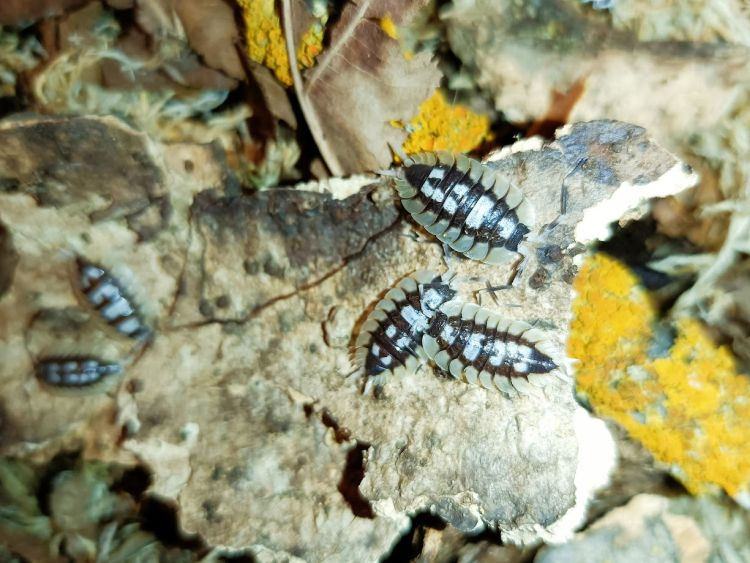
— Are they gonochorous?
— Most woodlice are gonochorous animals, but there are parthenogenetics (females that reproduce without the participation of males). One of these species is Trichorhina tomentosa. They are parthenogenetic, very small - a few millimeters in length. They eat rotten organic matter very well, they are often placed in containers with arachnids and reptiles so that the woodlice eat up the remains of food. As for their reproduction, they increase their numbers very quickly. If even one woodlice accidentally gets into a container with another, gonochorous species of woodlice, then gradually the parthenogenetic species can displace the "competitors". Since there will soon be a lot of them, they will begin to eat woodlice of another species, for example, during molting. On the one hand, this is a cleaning species, and this is good for it, but when kept next to other species of woodlice, it is terrible.
— How long do woodlice live? Are there any long-livers among them?
— This issue has not been studied for many species. It is quite difficult to observe this, because woodlice are kept in large numbers, and they are not particularly easy to mark – it is not clear where the old ones are and where the young ones are. Articles written about some species say that their average lifespan is from one to two years. But it seems to me that some types of woodlice can probably live longer.
— And yet – why did you choose woodlice, what attracted you to them? Most people treat them with hostility.
— As a rule, people treat them with hostility, since woodlice appear in their houses, usually in villages, where the floor rots or water leaks. Woodlice themselves simply process organic matter, feed on leaves on the street – essentially like earthworms, and are not dangerous in any way. In my scientific interest, a large role was played by the Invertebrates&Others page in the VKontakte group, which was created by guys from Moscow State University: Philipp Byzov, Dania Polyakov and Gleb Grachev. So something like a "Woodlouse Lovers Club" appeared.
- And what do the members of the "woodlouse club" do?
- About five years ago they began to actively promote the "woodlouse" theme, and now the community has grown quite a lot. They also began to actively breed woodlouse, which was previously not popular in our country, unlike, for example, in Europe.
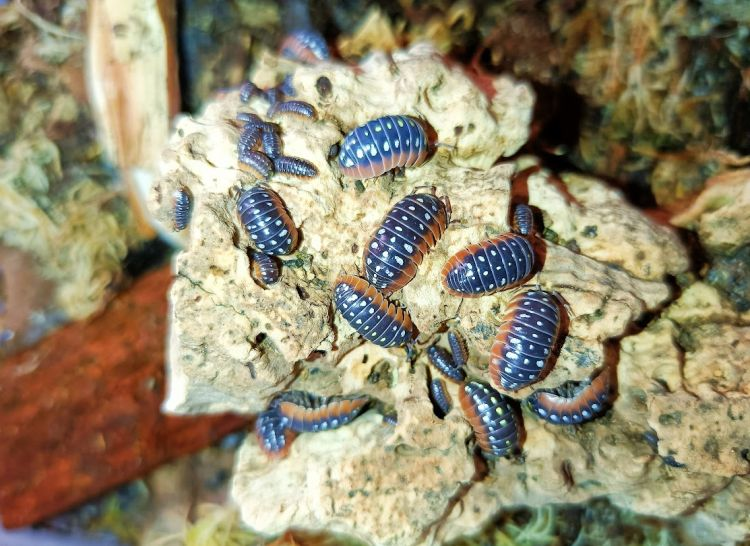
— Why breed them?
— Woodlice are a diverse group in color which does not attract people in their usual form when we see them in our garden - black, brown. And if we take some tropical or troglobiontic (cave-dwelling) species, which are not often found here - these are quite unusual, beautiful and bright woodlice. They are kept at home in containers or terrariums for beauty, for observation.
— Are they edible? How valuable are they in terms of protein?
— It is known that grasshoppers, cockroaches, and crustaceans are now actively eaten. As for woodlice, it seems to me that no one has really studied this yet, but in theory such an idea may be quite promising. I know of only one article on the possibility of using woodlice as food. It was published in 2023 in the Journal of Insects as Food and Feed.
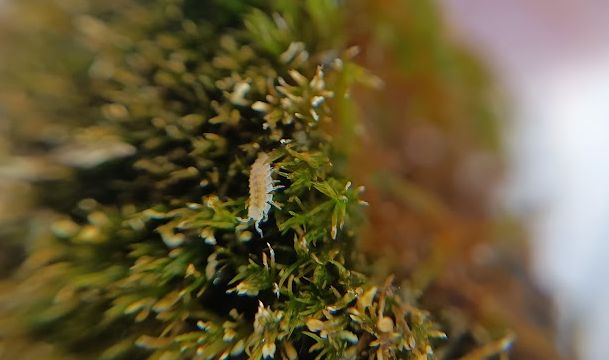
— Why is it important to study woodlice from a scientific point of view?
— This is a large group of soil reducers that process organic matter. Woodlice actively participate in the cycle of substances such as calcium, magnesium, potassium and sodium. In some ecosystems, woodlice involve up to 1.5% of these elements in the general cycle of substances, which is quite a lot. Only representatives of annelids participate in the cycle more. But other groups, for example, collembolans (springtails), some species of insects that live in the soil litter, play a slightly smaller role as decomposers. After earthworms, woodlice are in second place. You can also study many other aspects - their diversity, evolution, interaction with other organisms.
— Tell me honestly: would you like to study woodlice your whole life?
— Definitely yes, but my plans include expanding my horizons by studying, in addition to woodlice, other representatives of invertebrates, including soil fauna. I would especially like to study the unique fauna of woodlice living somewhere in the tropics. I hope I have a lot more ahead of me.
